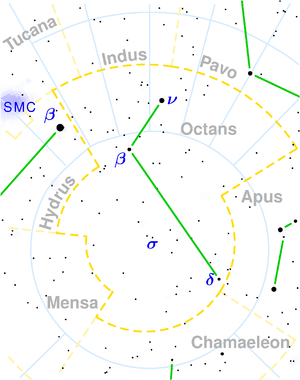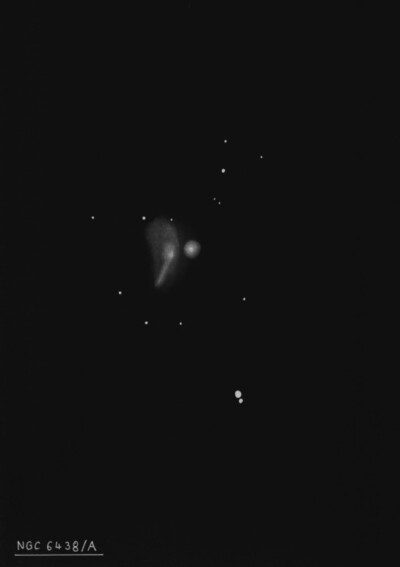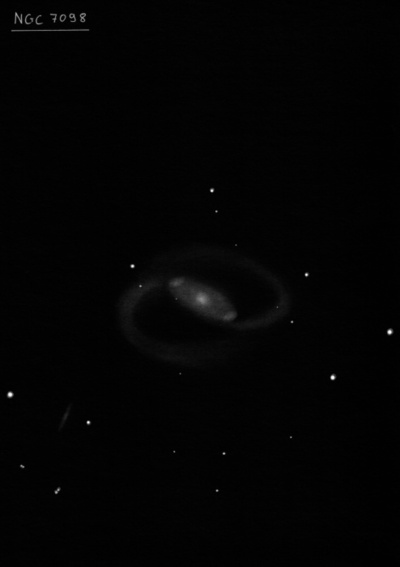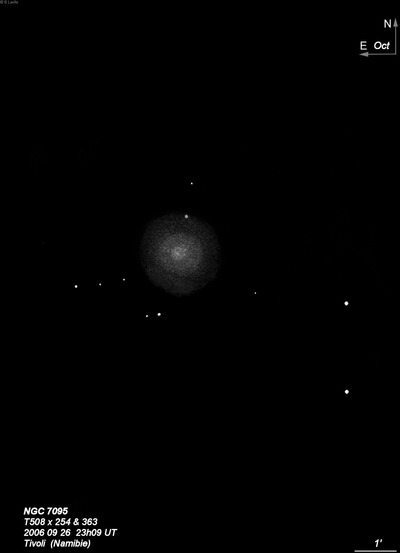 A faint constellation in the southern sky, invisible to us, in which the south celestial pole lies. The Octans corresponds in position to the Little Dipper of the northern sky, but does not fulfill the role of Polaris, not having a star near the pole bright enough for orientation. The closest star to the south pole visible to the naked eye is Sigma Octantis, which has an apparent brightness of only 5.48mag. Octantis is a very star-poor region and of little interest to observers because it contains no bright deep-sky objects. The constellation is worthy of attention only because it contains the south celestial pole.
A faint constellation in the southern sky, invisible to us, in which the south celestial pole lies. The Octans corresponds in position to the Little Dipper of the northern sky, but does not fulfill the role of Polaris, not having a star near the pole bright enough for orientation. The closest star to the south pole visible to the naked eye is Sigma Octantis, which has an apparent brightness of only 5.48mag. Octantis is a very star-poor region and of little interest to observers because it contains no bright deep-sky objects. The constellation is worthy of attention only because it contains the south celestial pole.
ν Oct - The brightest star in the constellation has a magnitude of 3.74. It is an orange giant.
λ Oct - A binary star with brightness components of 5.5mag and 7.7mag, separated by 3 arc seconds, therefore we will need a telescope with an objective diameter of around 100 mm to resolve them.
σ Octantis - The Southern Pole Star, or rather a star with a brightness of 5.4 magnitude, is visible only exceptionally with the naked eye on clear nights. It is so faint that it hardly helps us at all in finding the southern celestial pole. To determine it, the longer arm of the Southern Cross is used, which points to it, or the pair of Magellanic Clouds, which form an approximately equilateral triangle with it. Sigma Octantis is located 270 light-years away from Earth.
R Oct - The variable star of Mira Ceti type reaches a brightness of 6.4 mag at its maximum, which can be easily seen with a telescope. However, it drops to as low as 13.2 mag at its minimum and disappears from view. Its period is 406 days.
S a U Oct - Other variable stars of the Mira Ceti type, which can reach a maximum magnitude of 8, but only drop to a minimum of 14mag. Their periods are 259 and 303 days.
NGC 6438

NGC 6438A appears highly disrupted on the DSS, with two extensions or arms (perhaps two different interacting galaxies).
John Herschel discovered NGC 6438 = h3701 on 2 Jun 1835 and logged "pB; R; vgbM. RA rudely taken, and may be very erroneous." His RA was 3 minutes of time too large, though this translate to only 3.6' in the sky at this far southerly declination.
Pietro Baracchi observed NGC 6438 on 3 Oct 1885 with the Great Melbourne Telescope and described a "Double nebula or a small round pretty bright, [?], pmbM almost to a star like nucleus, with faint roundish flat appendage south following about 40" in diameter which might be a close companion to [NGC 6438]." His sketch clearly shows a double galaxy with a bright, small nebula on the NW side (NGC 6438) and a larger, fainter glow (NGC 6438A) attached on the SE edge.
600/800mm - 24" (4/11/08 - Magellan Observatory, Australia): at 260x, the appearance of this interacting pair was very strange! NGC 6438 appeared moderately bright, small, round, 0.4' diameter. NGC 6438A (a disrupted peculiar galaxy) is attached on the east side and appeared as a faint, diffuse glow, elongated SW-NE, ~0.8'x0.5'. This system is the second closest NGC galaxy to the south celestial pole and is located 4' NE of a mag 9.5 star (an uncatalogued double star) and 16' NE of mag 8 HD 160820. Mag 6.4 HD 159517 is 28' NW.
Notes by Steve Gottlieb
NGC 7098

John Herschel discovered NGC 7098 = h3876 on 22 Sep 1835 and recorded "pF; R; first vg, the psbM; in a field with many large stars, and strongly stippled." His position is 1.8 minutes of RA too large, though at this declination, the actual separation is 7'.
The RA in RC 2 is 2.5 minutes too large and this error is repeated in RNGC. The correct position is given in ESO and RC3.
600/800mm - 24" (4/12/08 - Magellan Observatory, Australia): at 200x appeared bright, large, sharply concentrated with a small, intense core ~20" in diameter. Surrounding the core is a large, fainter halo, elongated 3:2 SW-NE, ~2.0'x1.4'. This galaxy appears much brighter than NGC 7095, which was just previously observed, although the total B magnitudes are identical.
Notes by Steve Gottlieb
NGC 7095

John Herschel discovered NGC 7095 = h3875 on 21 Sep 1837 and recorded "F; pL; R; vglbM; 50"." His mean position (2 observations) matches ESO 027-001 = PGC 67546. Unfortunately, he miscopied his declination in the GC and Dreyer didn't catch the error in the NGC. The mistake apparently was caused by using the north polar distance of NGC 7097 instead of NGC 7095.
Because of this error the RNGC, PGC and HyperLeda has misidentified ESO 287-042 as NGC 7095. ESO and modern Atlases such as Uranometria 2000 and the Pocket Sky Atlas doesn't label ESO 027-001 as NGC 7095. The RNGC error is included in my RNGC Correction list #6.
600/800mm - 24" (4/12/08 - Magellan Observatory, Australia): fairly faint to moderately bright, fairly large, 1.8'x1.5', slightly elongated ~E-W, weak concentration to the center. A star is at the north edge of the halo.
Notes by Steve Gottlieb